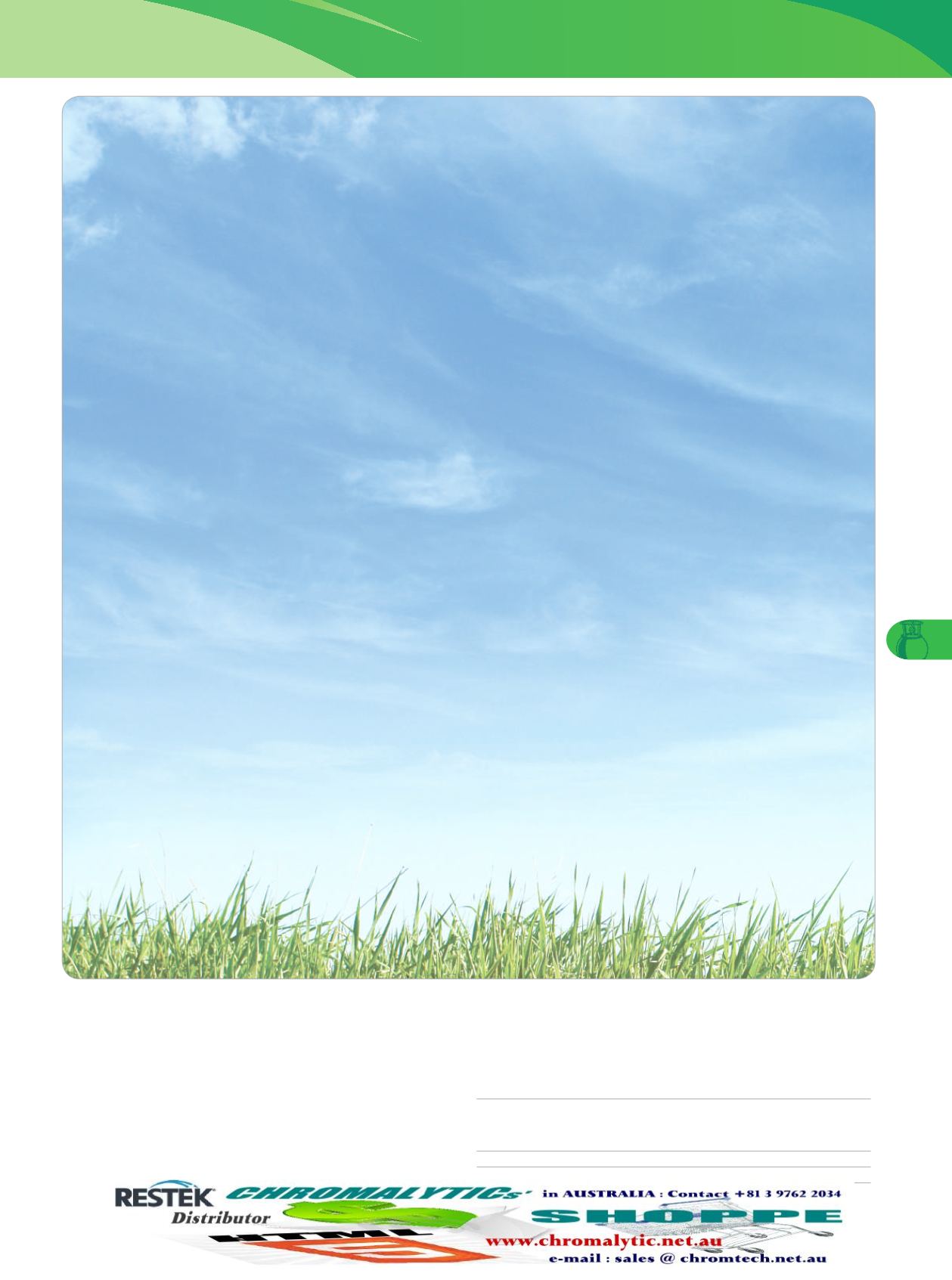

1-800-356-1688 or 1-814-353-1300
www.restek.com433
SAMPLE HANDLING |
AIR SAMPLING
Canister Maintenance/Reconditioning
Sampling Kit/Flow Controller Repair
Includes all new rubber seals in flow controller and orifice and frit replacement
cat.# 550131
Canister Repair
Includes valve replacement, leak test & cleaning
for RAVE™ valve: cat.# 569604
for Parker: cat.# 560838
for Swagelok: cat.# 563801
Normal wear and tear on canisters and components can result in
damage and leakage. Restek’s repair service allows you to extend
the life of your equipment for much less than the cost to replace
with new products. Contact Restek® Customer Service or your local
Restek® representative to take advantage of this service. You will be
given instructions and an RMA # to return the parts and completed
health & safety declaration to us.
Canister and Flow Controller Repair Service
Save money and increase performance with Restek’s canister and flow controller repair service.
How to Extend Canister Life
What reduces canister performance and longevity? Leakage is the most common reason for canister retirement, but
contamination and damage to the silicon lining can also send canisters to the scrapyard prematurely. Here are some tips to
protect your investment:
1. Prevent leaks
Use proper handling to avoid these three leading causes of leaks.
a. Particles in the valve
You can prevent particles from entering the valve by always using a 2 or 7 µm particulate filter during sampling and on
your canister-cleaning equipment. Also, protect the valve inlet by replacing the brass dust cap when not in use. The EPA-
recommended metal-to-metal sealing valves provide the greatest inertness, but tend to be more sensitive to particulate
damage than other valve types.
b. Galled thread fittings
Avoid galled thread fittings by using a gap gauge to prevent overtightening of compression fittings. Turning only ¼ turn
past finger-tight is another rule of thumb to prevent overtightening. Use brass compression fittings on stainless steel
during nonsampling activities, such as cleaning or calibration, to minimize thread damage. Galled threads may also cause
a poor connection to vacuum/pressure gauges, resulting in inaccurate measurement and the misleading conclusion that
canister leakage exists.
c. Overtightened valve
Canister valves are designed to close securely with hand tightening only. Overtightening a valve closure with a wrench
may damage the valve seat where the seal is made.
2. Reduce contamination
a. Segregate high concentration (ppm) cans and trace concentration (ppb) cans. Use dedicated canisters, or gas sampling
bags, for ppm-level sampling, since it is extremely difficult to remove impurities from ppm sampling to a level suitable for
trace sampling.
b. Clean the entire sampling train as you would the can to minimize introduction of contaminants into a clean can.
Maximum temperature is 110 °C on the gauge and 130 °C on Restek’s Veriflo® flow controller.
c. High-temperature (>100 °C) humidified air (steam cleaning) provides the most effective way to remove contamination
from electropolished cans (TO-Can® or SUMMA canisters), but can damage silicon-lined cans (SilcoCan® canisters).
3. Avoid damage to silicon-lined cans
Be sure to follow method recommendations when cleaning your canisters to avoid oxygen damaging the silicon lining.
Cleaning studies of SilcoCan® canisters using humidified air and heat at 80 °C and 125 °C have shown reduced recoveries of
sulfur compounds when compared to using nitrogen under the same conditions. This irreversible damage is due to oxida-
tion of the surface, creating active sites that may affect the recovery of reactive or polar compounds. Strong acids and bases
may also result in damage to the internal can surface.


















